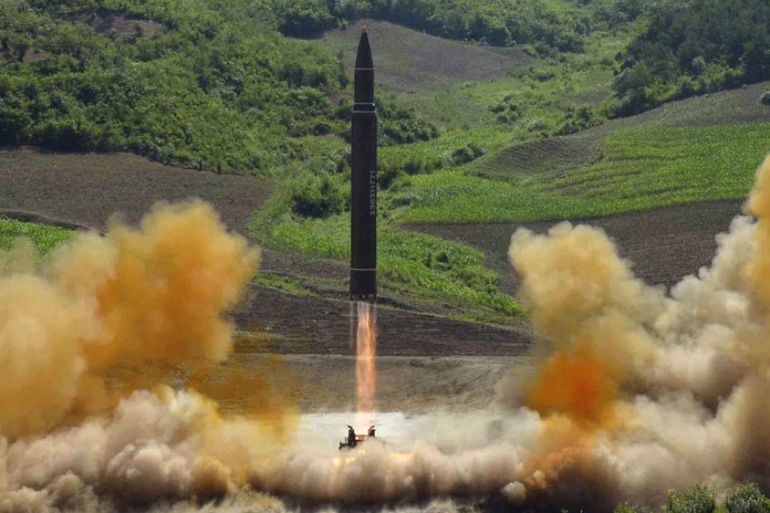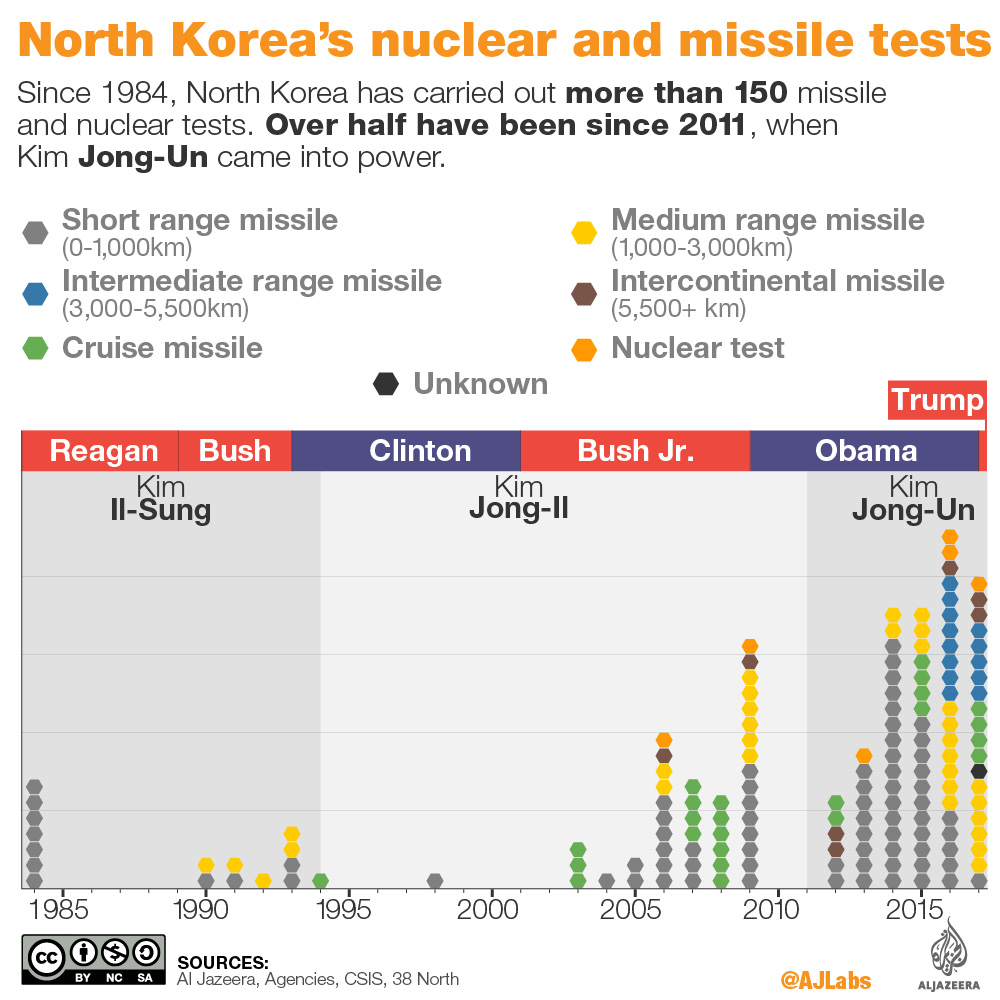North Korea fires ballistic missile
South Korean president calls national security meeting following the latest missile launch by Pyongyang.

North Korea has fired a ballistic missile, the first such launch since mid-September, according to officials in South Korea, Japan and the United States.
“North Korea launched an unidentified ballistic missile eastward from the vicinity of Pyongsong, South Pyongan Province, at dawn today”, South Korean army officials told South Korean news agency Yonhap.
Keep reading
list of 4 itemsBombs and viruses: The shadowy history of Israel’s attacks on Iranian soil
Republican congressman suggests nuking Gaza
UK’s Sunak to unveil $252m investment in nuclear deterrent, nuclear energy
North Korean state television, KCNA, said that missile is the “most powerful ICBM [intercontinental ballistic missile], which meets the goal of the completion of the rocket weaponry system development set by the DPRK”, according to Yonhap. DPRK refers to North Korea’s official name, the Democratic People’s Republic of Korea.
KCNA released photos of North Korean leader Kim Jong-un celebrating the launch, according to AFP news agency.
The missile was fired from Pyongsong, a city in South Pyongan Province, at around 3:17am local time (18:17 GMT) on Wednesday, according to South Korea’s military.
Japanese Defence Minister Itsunori Onodera said the missile reached an estimated altitude of around 4,000km and broke up before landing in the country’s “exclusive economic zone”.
His US counterpart, James Mattis, said the missile went higher than ever before, describing it as a step towards Pyongyang building missiles that can “threaten everywhere in the world, basically”.
“With these tests, North Korea wants to demonstrate to the world the range its missiles have,” Al Jazeera’s Kathy Novak, reporting from South Korea’s capital, Seoul, said.
The U.S. @DeptofDefense detected and tracked a single #NorthKorea missile launch today at about 1:17 p.m. EST. Initial assessment indicates that this missile was an intercontinental ballistic missile (ICBM). More: https://t.co/AjOGOhd6HF
— U.S. Indo-Pacific Command (@INDOPACOM) November 28, 2017
An initial assessment by the US Department of Defense said North Korea fired an intercontinental ballistic missile (ICBM). This type of missile is capable of carrying nuclear warheads and could reach the mainland of the United States.
If the Pentagon’s first assessment turns out to be correct, it would be the third test of an ICBM by North Korea this year.

Following the launch, South Korean President Moon Jae-in was expected to preside a national security meeting with top advisers, while Japanese Prime Minister Shinzo Abe called for an emergency meeting of the UN Security Council.
“This is being taken very seriously here in the region,” said Al Jazeera’s Novak, noting that South Korea conducted a live-fire drill five minutes after the firing of the missile.
The message that the South wants to send to the North is that it is monitoring actions coming out of North Korea; that it detects these missile launches quickly; and that it is prepared to respond,” she added.
Commenting on the launch, US President Donald Trump said “it is a situation we will handle”, adding that the US stance on the North Korea issue would not change.
Last week, Trump re-designated North Korea as a “state sponsor of terrorism”, a move that was described as being part of a “maximum pressure campaign” to isolate Pyongyang even more.
Trump said more economic sanctions were to be expected as a result of his decision.
The US president and North Korean leader Kim Jong-un have repeatedly traded barbs – Trump has called Kim “rocket man”, while North Korea’s leader described the US president as a “dotard”.
Jens Stoltenberg, secretary-general of NATO, condemned the missile launch.
“This is a further breach of multiple UN Security Council Resolutions, undermining regional and international security”, he said in a statement.
His view was echoed by the European Union. “This launch represents a further grave provocation, and a serious threat to international security,” an EU spokeswoman said.

First launch in months
The launch in the early hours of Wednesday was the first since September 15, when North Korea fired a ballistic missile over the Japanese island Hokkaido, eventually crashing into the Pacific Ocean.
That launch was condemned by leaders around the world.
On September 3, North Korea conducted its most powerful nuclear test ever, detonating a hydrogen bomb northeast of Pyongyang. That test, weeks before the United Nations General Assembly, angered global leaders.
The UN Security Council implemented new economic sanctions on North Korea as a result of that nuclear test.
|
|